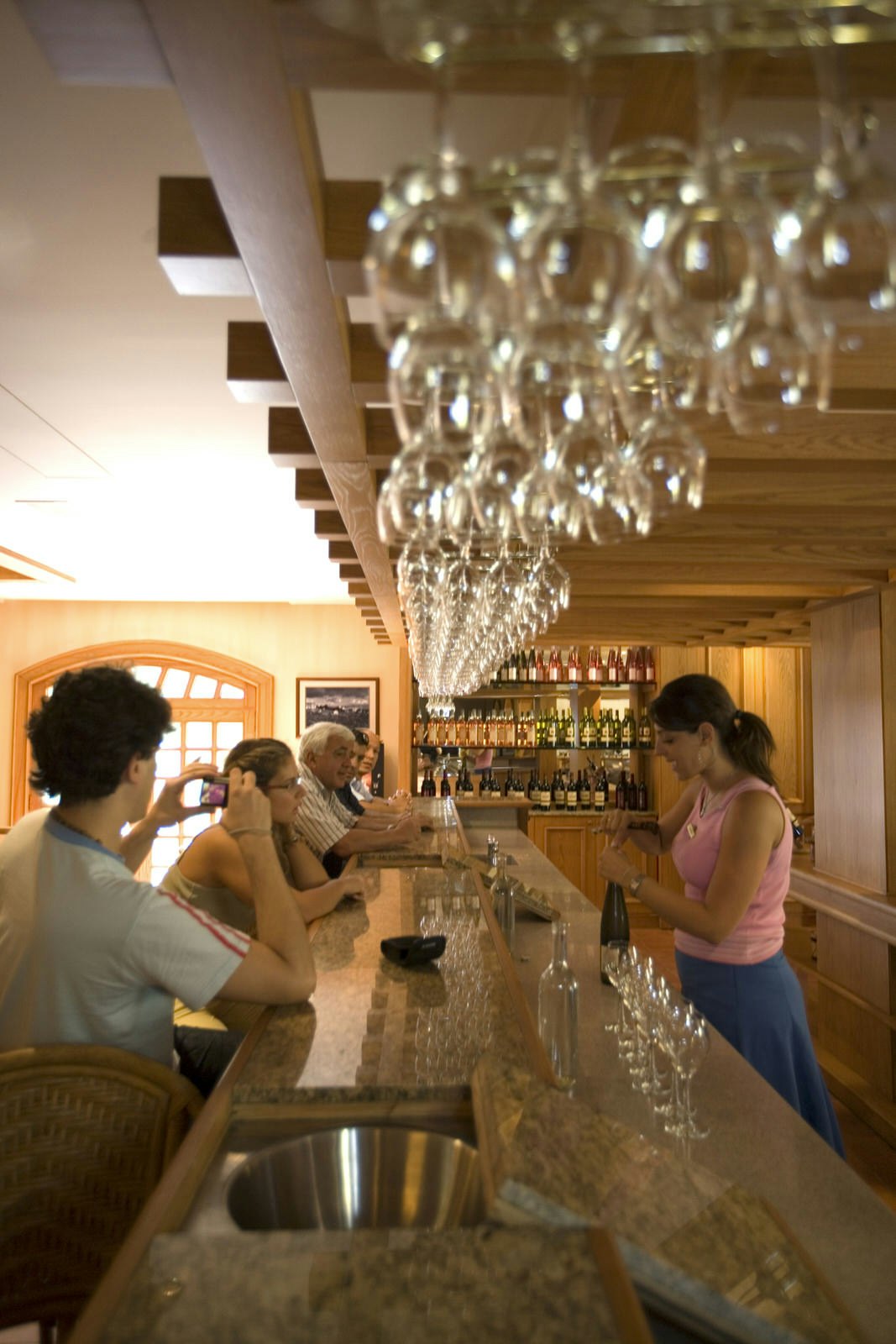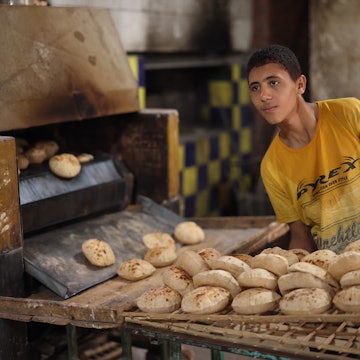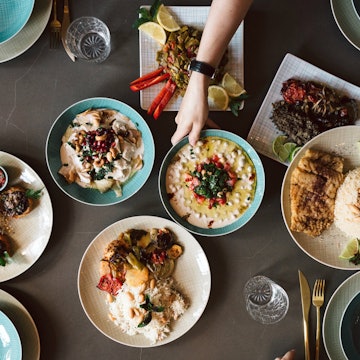
Through vineyards and valleys: on the wine trail in Lebanon

Jun 12, 2018 • 5 min read

For centuries, grapes have thrived in the cool climate of Lebanon’s mountainous landscape, making the Mediterranean country one of the oldest wine-producing regions in the world. This rich history is often eclipsed by the country’s more recent bouts of civil war and its troubled neighbours. Despite this, Lebanon's wine industry has found fertile soil for growth, with a trail of wineries opening to those wishing to sample the fruits of these vines.

History of wine in Lebanon
There’s some disagreement about exactly when the first vineyards emerged in this region, but it's likely they were planted several thousand years before the birth of Christ. Phoenician traders are believed to have brought their vines to the region in 2000 BC, and the area was reportedly known for its wine well into the Middle Ages. In 1517, the Ottoman Empire absorbed Lebanon and banned wine production. The Ottomans offered one reprieve: wine could be used for religious purposes. Under this provision, many of Lebanon’s Christians kept at work.
The modern-day production of wine in Lebanon, however, took root around 1857. At that time, Jesuit missionaries brought new vines to the Bekaa Valley and developed different grape and wine production techniques, which the Lebanese industry believes laid the foundation for the vineyards there today.

Challenges to Lebanese winemakers
Despite a lengthy history of winemaking, war stunted the growth of Lebanon’s industry, and the country still struggles to emerge from that legacy. From its civil war (1975-1990) to the July War in 2006, travel warnings and simmering sectarian tensions have hindered growth of the country’s tourism and wine industries. Even now, the Syrian conflict and refugee crisis looms over one of Lebanon’s major wine producing regions, the Bekaa Valley, which sits along the border of Syria and hosts several refugee camps for those escaping the war raging just on the other side of the Anti-Lebanon mountain range. This proximity to the violence in Syria, as well as the fact the militant group Hezbollah also operates from this area, means visitors should be cautious and stay informed about the ever-changing security situation.
In spite of these challenges, there is, relative to Lebanon’s recent history, a sense of calm after years of civil war. The number of vineyards has increased from just eight when the civil war ended to more than 42 today. Meanwhile, Lebanon’s union of winemakers, Union Vinicole du Liban, estimates Lebanese vineyards produce more than 8 million bottles each year, about half of which are exported to Europe, Canada and the United States.

Where to go
Though there are vineyards scattered all over Lebanon, the two most popular wine trails rest in the Bekaa Valley to the east and the Batroun region in the north. From Beirut, the Bekaa Valley is just on the other side of Mt Lebanon. A day trip over the snow-capped range can be combined with side trip to the magnificent Temple of Bacchus, celebrating the god of wine himself, in Baalbek. Meanwhile, to visit the Batroun area, you can drive up the coast and stop in the historic port of Byblos. There, you can see the ruins of the Crusaders Castle and its archeological site, which will take you back more than 8000 years, deep into Phoenician and Roman history. As the country continues to develop its identity as a wine destination, there’s not one type that's distinctly Lebanese, such as riesling for Germany or chianti for Italy. But that diversity might delight some imbibers, as you’ll find a spectrum of both whites and reds, along with the traditional Lebanese arak.
Caves of Chateau Ksara
Nestled in the Bekaa Valley, Chateau Ksara is one of Lebanon’s oldest and largest wine producers. Founded by Jesuit monks in 1857, the winery has a series of caves where wines are aged. After learning about the history of the vineyards from a video, visitors get a chance to explore the caves before heading to the tasting room to try the vintages.
Try: Cuvée du Troisiéme Millénaire: this red blend gives you a chance to taste the fruit of Chateau Ksara’s caves, as it is aged in French oak casks in the winery’s underground cellars.

Grotto at Chateau St Thomas
Not far from Chateau Ksara, you’ll find the somewhat smaller cave cellars of Chateau St Thomas. The winery has carved out a small grotto in honour of its patron saint.
Try: Chateau St Thomas Pinot Noir: This winery was the first to produce a pinot noir in Lebanon.
Chateau Kefraya
The tasting room of Chateau Kefraya pairs an idyllic view of mountains with a sampling of reds and whites. Another of Lebanon’s largest wine producers, Chateau Kefraya offers a 'train' tour of its picturesque setting where visitors can also walk through the vineyards and the cellars. Finish your visit by dining at the restaurant.
Try: Comte De M: A blend of cabernet sauvignon and syrah grapes, this highly rated wine will delight fans of red.
IXSIR
One of the most popular wine day trips from Beirut is IXSIR. Though it has its winery roughly 60km north of Beirut in the Batroun region, the grapes come from three different vineyards around the country. Call ahead to get a reservation at its restaurant.
Try: Ixsir’s Altitudes Blanc: It's a dry, crisp, fruity wine perfect for sitting outside on a summer day.

Getting around
To tour the vineyards, it’s best to book a driver for the day and choose one of the two wine-making regions. (For both wine trails, don’t forget to bring your passport as there are usually checkpoints along the roads leading to the vineyards.) If you can’t make a day trip out of Beirut, don’t worry: there are plenty of opportunities to taste the fruit of Lebanon’s vines in the city. On Saturday, head out to the Souk El Tayeb where small wine producers often offer tastes of their vintages. In addition, many of Beirut's restaurants have local wine lists that include Lebanese vintages.













